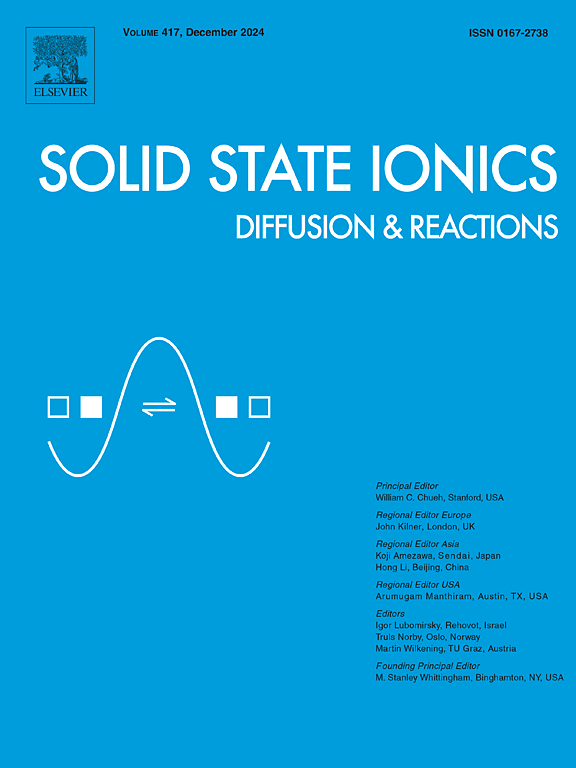Effects of depth of discharge on the electrochemical performance of LiFePO4-graphite pouch cells
IF 3.3
4区 材料科学
Q3 CHEMISTRY, PHYSICAL
引用次数: 0
Abstract
Lithium iron phosphate-graphite (LFP-C) batteries are widely used in energy storage and electric vehicles due to their high safety and good cycling stability. However, there is still a lack of in-depth research to investigate the impact of depth of discharge (DOD) on LFP-C pouch cells. In this work, we systematically investigate the influence of DOD (2.5 V and 1.5 V) on the cycling performance of LFP-C pouch cells, and the evolution of the cathode–electrolyte interphase (CEI) and solid electrolyte interphase (SEI) layers. In comparison to a DOD of 2.5 V, the cell with a DOD of 1.5 V exhibits a rapid capacity degradation after 50 cycles. Combined with comprehensive characterizations, the mechanism of battery decay has been revealed. A deeper discharge to 1.5 V results in an increase in the disorder of graphite. Additionally, the organic components in the SEI layer decreases, while the Li2CO3, LiF, and Li3PO4 inorganic products enrich due to the continued decomposition of electrolyte. Meanwhile, the pouch cells generate a considerable quantity of H2 and minor CH4 gases. This study will pave the way to understand the effects of overdischarge on the electrochemical performance of commercial pouch cells and the evolution mechanism of CEI/SEI layers.

放电深度对lifepo4 -石墨袋电池电化学性能的影响
磷酸铁锂-石墨(LFP-C)电池因其安全性高、循环稳定性好而广泛应用于储能和电动汽车领域。然而,对于放电深度(depth of discharge, DOD)对LFP-C袋状细胞的影响,目前还缺乏深入的研究。在这项工作中,我们系统地研究了DOD (2.5 V和1.5 V)对LFP-C袋状电池循环性能的影响,以及阴极电解质间相(CEI)和固体电解质间相(SEI)层的演变。与DOD为2.5 V的电池相比,DOD为1.5 V的电池在50次循环后表现出快速的容量退化。结合综合表征,揭示了电池衰减的机理。进一步放电至1.5 V会导致石墨的无序性增加。此外,由于电解质的持续分解,SEI层中的有机组分减少,而Li2CO3、LiF和Li3PO4无机产物富集。同时,袋状电池产生相当数量的H2和少量的CH4气体。本研究将为了解过放电对商用袋状电池电化学性能的影响以及CEI/SEI层的演化机制奠定基础。
本文章由计算机程序翻译,如有差异,请以英文原文为准。
求助全文
约1分钟内获得全文
求助全文
来源期刊

Solid State Ionics
物理-物理:凝聚态物理
CiteScore
6.10
自引率
3.10%
发文量
152
审稿时长
58 days
期刊介绍:
This interdisciplinary journal is devoted to the physics, chemistry and materials science of diffusion, mass transport, and reactivity of solids. The major part of each issue is devoted to articles on:
(i) physics and chemistry of defects in solids;
(ii) reactions in and on solids, e.g. intercalation, corrosion, oxidation, sintering;
(iii) ion transport measurements, mechanisms and theory;
(iv) solid state electrochemistry;
(v) ionically-electronically mixed conducting solids.
Related technological applications are also included, provided their characteristics are interpreted in terms of the basic solid state properties.
Review papers and relevant symposium proceedings are welcome.
 求助内容:
求助内容: 应助结果提醒方式:
应助结果提醒方式:


